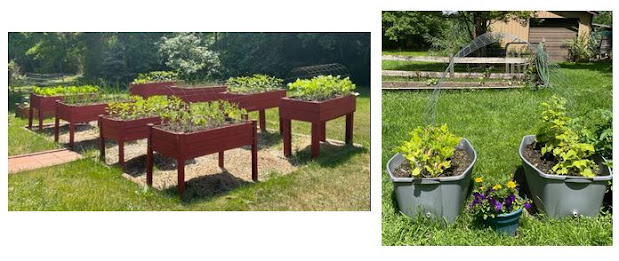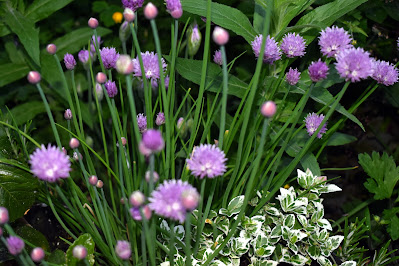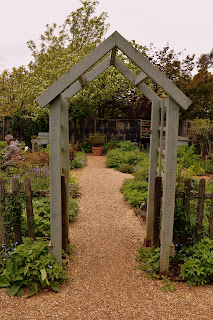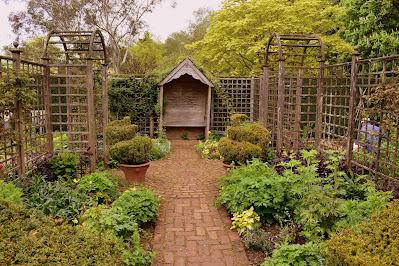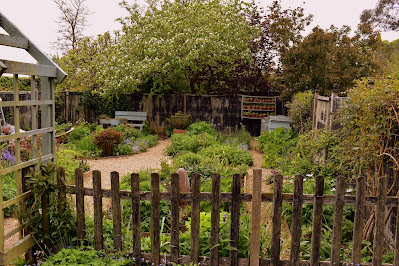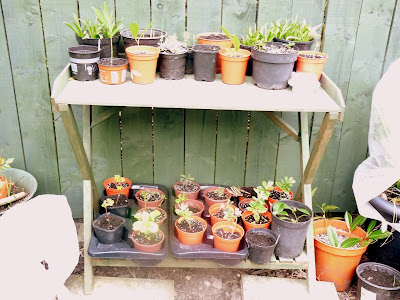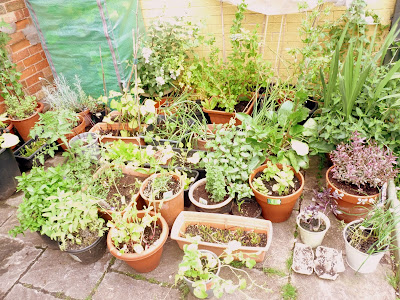Can You Successfully Grow Vegetables in Pots?
I have grown plants in pots practically my whole life. It started out when I lived in apartments and I grew flowers on my balcony. I always loved having pots of pretty flowers around my table and chairs where I sat to drink coffee in the morning.
Things changed when I moved to a beautiful ground floor townhouse with a large sunny patio. I loved the patio and I was discussing it with my mom when she came over to see it and and she told me I should start a potted vegetable garden. I was surprised as I did not know that veggies could be successfully grown in pots. I was excited to try this and I picked her brain for all the gardening tips I could get! Remember, this was in the 80's, and we did not have all the information at our fingertips like we do today on the internet.
Thus began my hobby of vegetable gardening in containers. I have learned a lot over the years. I continued doing it even after I bought a house. I would have vegetables in both pots and in elevated garden beds. Here are a couple pictures of them:
My Tips for Growing Vegetables in Pots
1. Soil - Always buy premium potting soil. What comes out of a pot is only as good as what goes in. Never dig dirt out of the ground or buy top soil. Don't put rocks or gravel in the bottom of your pot, fill the whole thing with earth. The more soil you have to hold moisture and fertilizer, the better.
2. Pots - Pots made of clay, ceramic, plastic, concrete and wood are good. Never use a container that is metal or heat conductive, as it can literally cook the roots and kill your plants.
3. Drainage - It is imperative that your pot has a few good drainage holes. If there are no holes, the water will sit at the bottom of the pot and roots can rot and mold and slime will contaminate your soil.
4. Plant Tags - When buying plant sets they always come with a little plant stake with the name of the plant and instructions on how to plant, water, sun needed, etc. Make sure to save these tags and stick them in your pot for handy reference. Follow the directions, it is the best way to get great results.
5. Slow Release Fertilizer - Mix slow release fertilizer in with your soil before planting. Do not put it in the hole before dropping the plant in as direct contact can burn the roots.
6. Quick Release Fertilizer - When your plants start to flower, give them some fast acting fertilizer like Miracle Gro, and then give them a bit more in the middle of fruiting to help them produce more.
7. Sunlight - Make sure your plants have the required amount of sunlight needed on their tags. Not enough sunlight and they will not produce as much as they could. This is the great thing about pots.......you can move them in or out of the sun as needed!
8. Water - Potted plants dry out much quicker than plants in the ground. As such, they need to be watered every day in the heat of the summer. Try to water in the early morning or evening and not during the hottest part of the day because at that time much of the water evaporates.
9. Soil Maintenance - Put a teaspoon of fish emulsion liquid in your water once a week or so. This helps the soil to maintain the nutrients needed for healthy plants.
10. Trimming Your Plants - If you see leaves turning yellow or the edges turning brown and curling, don't be afraid to trim those leaves off. If a leaf is dying, the plant will use valuable resources to try to save it. Those resources could be better used making more fruit, or helping the stem grow. Don't be afraid to trim your plants, sometimes that's what it takes to save them if they are looking bad!
11. At the End of the Season - When your harvest is done, pull all the plants and throw them away. Dump the dirt and rinse out your pots and store them inside for the winter. (if you have winter) Leaving them outside full of dirt in freezing weather can make them crack.
12 At the Beginning of the Next Season - In the spring, put one part bleach to 9 parts water in a spray bottle and generously spray the inside of your pots to kill any bacteria, diseases or insects that may be inside. Rinse well to remove the bleach and set in the sun to dry. Now you are ready to begin your new potted garden!
Gardening is fun and relaxing
Don't expect things to perfect from the start. I have made a ton of mistakes over the years. Sometimes you are just unlucky, like the year my peppers were invaded by pests and I lost almost all my plants. Sometimes you can replant, if you have enough time, but sometimes you just have to shrug it off.
I will never forget the year that I somehow thought it would be smart to plant 6 pots of lettuce all at the same time. We had barely eaten two of the pots worth when the rest bolted and went bitter and I had to throw it away. A valuable lesson learned. Don't plant more than you can eat before it goes bad! This applies only to veggies that you cannot can or store to eat later....like lettuce!
If you want more detailed information on how to grow lettuce, check out my blog Homemade by Jade and the post on How to Grow Lettuce in Containers
Failure is instructive. The person who really thinks learns as much from his failures as from his successes." - John Dewey
Seven years ago we moved to the country on five acres. Believe it or not, I still grow a lot of stuff in pots. It is just so easy. Less weeding and easy to water and pick. We also do it because it is just too dang hard to garden in the ground at our age. That is why we use elevated garden beds and tote and trellis systems for most of our gardening, in addition to pots. It is so much easier for us old folks!
If you would like to know more about Elevated Garden Beds, check out my Review of Elevated Garden Beds, right here on Review This Reviews!
I guess this is not really a review, more like a recommendation. Container gardening is fun and easy, not to mention saves you a bit of money and gives you healthier food to eat. It helps to calm your mind and gives you a feeling of accomplishment. It's also a great way to spend time with your kids and teaches them how to be more self sufficient. Everyone should have a garden and growing in pots lets everyone try it out and learn, even if those who don't have any land.




